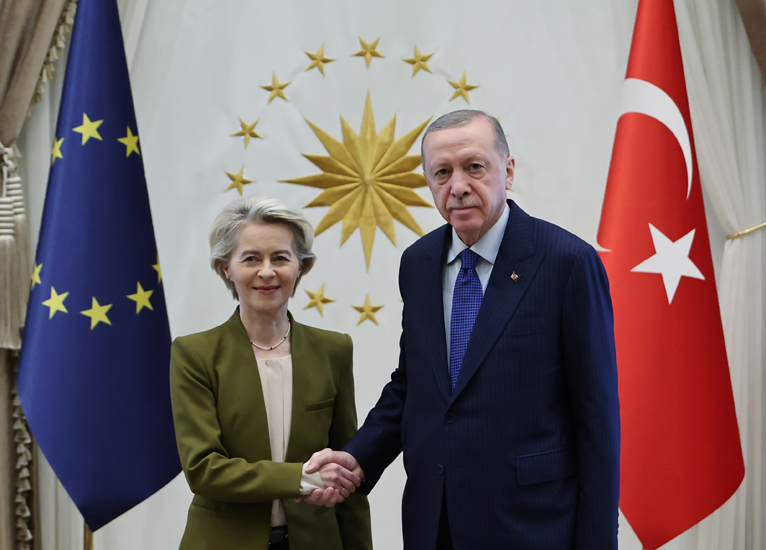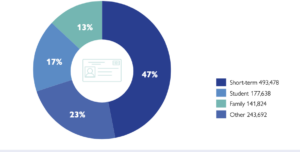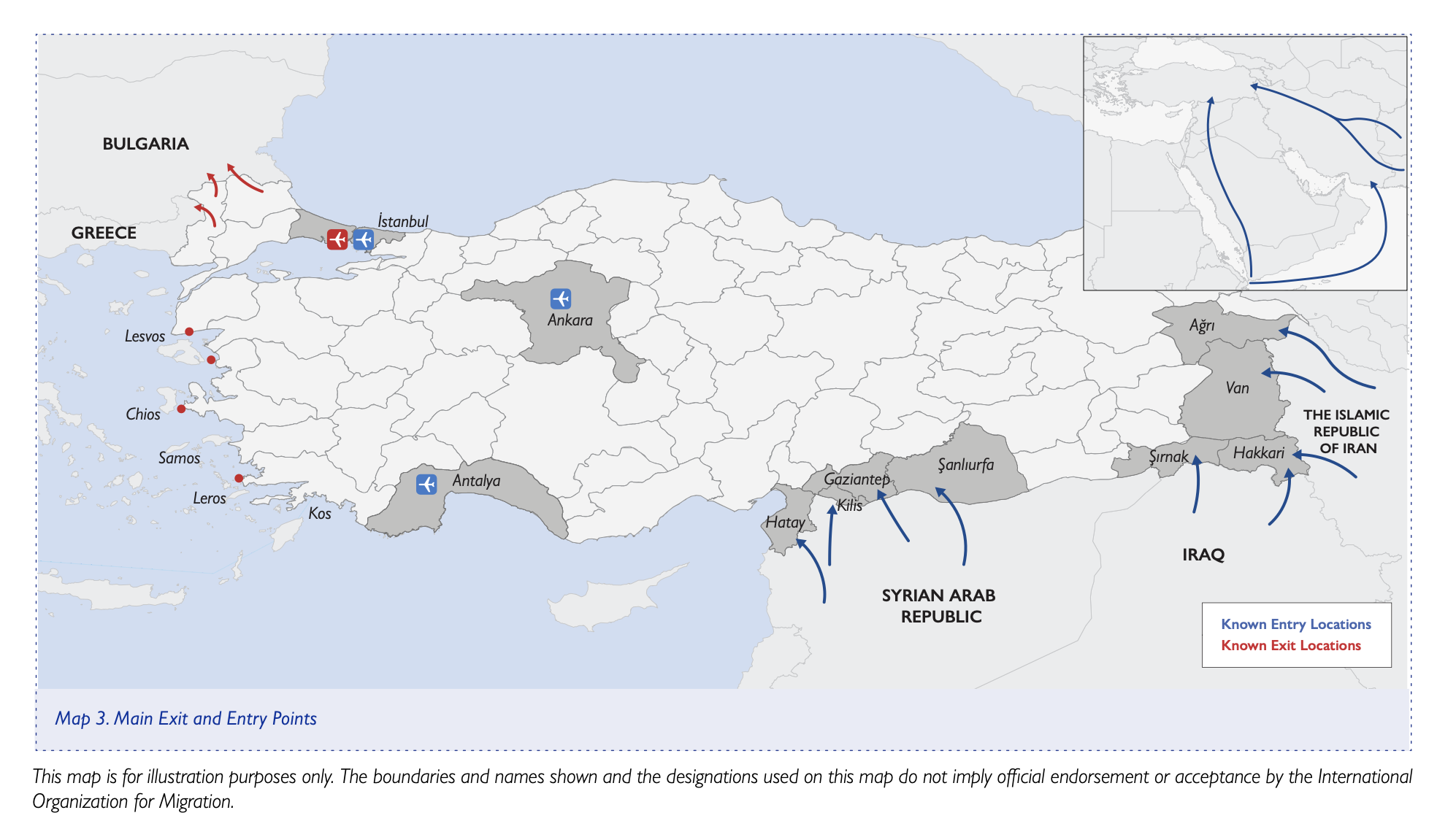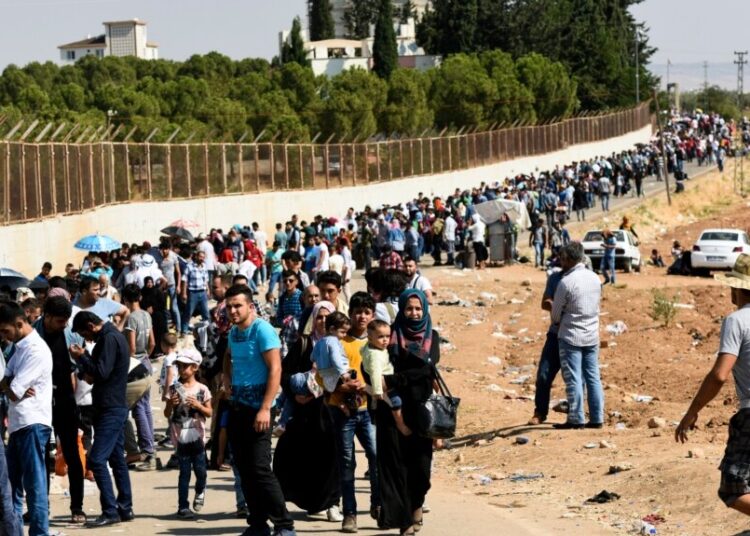Levent Kenez/Stockholm
Turkey witnessed significant developments in its migration landscape throughout 2024, with declines in Syrian refugees under temporary protection, increased apprehensions of irregular migrants and changes in residence permit patterns, according to the April 2025 annual report by the International Organization for Migration (IOM), an intergovernmental organization within the UN system.
While illegally entering Turkey through its southern border remains relatively easy, exiting via the western land border or by sea has become increasingly difficult , a shift largely driven by Ankara’s efforts to avoid attracting criticism from the European Union.
As of December 2024 the number of Syrian nationals under temporary protection in Turkey decreased by 313,302 compared to the previous year, settling at 2,901,478. Syrians still make up the majority of foreigners residing in Turkey, accounting for approximately 69 percent of the total foreign population. The demographic structure of this group remains predominantly young, with 78 percent below the age of 35.
Turkish President Recep Tayyip Erdogan addressed his party in parliament on December 25 following the December 8 seizure of Damascus by Hay’at Tahrir al-Sham (HTS), a Turkish-backed Islamist coalition dominant in Syria’s opposition-controlled regions, that resulted in the ouster of former president Bashar al-Assad. During his speech, he said, “We will assist those who want to return, but we will not force anyone to leave. For our brothers and sisters contributing to Turkey’s economic, academic, scientific or commercial life, we will keep our doors open if they want to stay,” adding, “As always, the opposition will undoubtedly try to undermine this process as they have in the past.”

The main reasons behind Erdogan’s allowing Syrian refugees to stay in Turkey lie primarily in the demands of the small and medium-size business sector that supports him. Turkey’s large Syrian refugee population plays a significant role in the country’s labor market. The Turkish government and businesses are keen on maintaining this labor force despite ongoing debates over their return to Syria. Syrians, especially those working informally, contribute to filling labor gaps in areas where local Turkish workers are reluctant to take jobs — primarily in agriculture, construction and low-wage factory work. This includes crucial areas such as livestock breeding, where labor shortages are widely reported.
Erdogan’s stance on keeping Syrians in Turkey also has long-term political implications, including effects on elections. Since the outbreak of the Syrian civil war in 2011, Erdogan has advocated for an open-door policy toward Syrians, a position that has won him significant popularity and affection among the Syrian population in Turkey. According to Interior Ministry data, as of November 2023, the number of Syrians who had acquired Turkish citizenship stood at 237,995, with this number steadily increasing. In a 2019 statement Erdogan emphasized the importance of expanding the citizenship process, saying, “Why? Once they become citizens, they can find jobs, work with any institution and contribute.”
It is no secret that Syrian migrants in Turkey have become a key bargaining chip between President Erdogan and the European Union. In exchange for keeping refugees in Turkey, the Erdogan government not only receives financial aid but also benefits from the international community overlooking its poor human rights record.
A few days after the regime change in Syria, European Commission President Ursula von der Leyen made an official visit to Turkey, on December 12. During a joint press conference with President Erdogan, von der Leyen announced that the EU would allocate an additional 1 billion euros to Turkey for Syrian refugees. This follows the EU’s previous commitment under the Facility for Refugees in Turkey (FRIT), which provided 6 billion euros in aid to support refugees in the country. FRIT is designed to fund projects in key areas such as humanitarian assistance, education, health, municipal infrastructure and socioeconomic support, with projects running until mid-2025.
The resettlement of Syrian refugees from Turkey to third countries continued in 2024, bringing the total number resettled since 2016 to 71,064. The primary destination countries included Germany, Canada, the United States, France and the Netherlands. Other recipient countries included Sweden, Finland, the United Kingdom, Belgium, Norway and Spain.
The Turkish opposition argues that considering the number of Syrians in Turkey, this figure is very low and accuses the Erdogan government of turning the country into a holding center for the EU to serve its own interests.

Meanwhile, the total number of foreigners residing in Turkey has surpassed 4.1 million, according to the report. Of these, more than 3.1 million are people seeking international protection and 1,056,632 are holders of various residence permits. The largest category among residence permit holders continues to be short-term permits, numbering 493,478. However, this category experienced a decline of 145,286 compared to 2023.
Conversely, the number of individuals having residence permits classified under the “other” category rose by 54,429, reaching 243,692. Government data did not elaborate on the specific nature of these permits.
In terms of nationality, the top countries of origin for residence permit holders include Turkmenistan (116,621), Iran (82,172), Afghanistan (77,387), Iraq (73,257) and the Russian Federation (71,640).
Turkey also continues to host 230,617 refugees and asylum-seekers, primarily from Iraq, Afghanistan, Iran and Ukraine, according to the United Nations High Commissioner for Refugees (UNHCR).
The report indicates a sharp increase in the number of irregular migrants. A total of 225,831 irregular migrants were apprehended in 2024, the majority originating from Afghanistan, Syria and Turkmenistan. Additionally, authorities identified 13,020 migrant facilitators during the same period.
A significant number of these individuals entered Turkey from neighboring countries including Iran, Syria and Iraq. Many attempted to transit through Turkey en route to Europe, often via the Aegean Sea.

The Turkish Coast Guard (TCG) reported intercepting or rescuing 58,097 migrants at sea in 2024, representing a decrease of 1,725 compared to 2023. However, 37 fatalities were recorded during these maritime incidents. The leading nationalities among those intercepted at sea were Afghan, Syrian, Sudanese, Palestinian, Egyptian, Yemeni, Iraqi, Iranian, Congolese and Somali.
Monthly data provided by the TCG showed that the highest number of interceptions occurred in September (6,935), followed by August (6,774) and November (6,508). July saw the highest number of fatalities at sea, with eight deaths recorded.
The country’s 30 removal centers, distributed across 28 provinces including Istanbul, Izmir, Gaziantep and Ankara, currently have the capacity to accommodate 20,540 people under administrative detention.
In addition to irregular migration, Turkey also recorded 179 victims of human trafficking in 2024. This figure marks a decrease from previous years — 223 in 2023, 343 in 2022 and 402 in 2021. The report notes that after a decline between 2010 and 2013, trafficking cases increased until 2017 and have shown fluctuating patterns since.
Known entry points into Turkey include border provinces such as Hatay, Kilis and Şanlıurfa from Syria, as well as crossing points from Iraq and Iran. Air entry is mainly through Istanbul, Antalya and Ankara. Known sea exit points toward Greece include locations such as Çeşme, Ayvalık, Bodrum and Didim.
According to the report, migration data were compiled using secondary sources including the Turkish Presidency of Migration Management (PMM), the UNHCR and the TCG. While efforts were made to verify and cross-check figures, the IOM cautions that due to methodological differences and limitations in data transparency, variations and margins of error may exist.
Text of the IOM’s report on Turkey:












